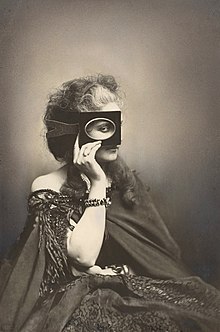The first photo to be considered fashion photography was a daguerreotype in the 1830’s although it could not be reproduced. The first mass produced fashion photograph was taken in the 1850’s of a Tuscan noblewomen. The photographer, Adolphe Braun, published a book containing over two hundred pictures of the noblewomen wearing her official court garb. This made her the first fashion model.
As technology became more advanced in the 1900’s, fashion photography moved on and French magazines began to publish the first fashion photographs leading the way for America and Europe to do the same. For a short period of time Germany
Leading fashion photographers have contributed to fashion as much as the designers of the clothes. They have carved the way that fashion is presented to us and have the ability to make us look at fashion in a completely different way.
One of the most famous fashion photographers is Mario Testino. He has worked with royalty, actors, artists, models and singers and has shot fashion stories for leading fashion magazines such as Vogue, Vanity Fair and V. He has shot provocative campaigns and is one, if not the, leading fashion photographer.
Irving Penn started off capturing mostly celebrities but his move into fashion photography saw him paying great attention to detail. In his photographs your eye is drawn to the accessories on the model.
Finally Richard Avedon is another notable fashion photographer. He bought colour, vibrancy and emotion to fashion photos. His images capture the personality of the models.
Photo manipulation in fashion photography is a topic that sparks much debate. The manipulation can be as small as removing a freckle or as large as making someone’s hips, legs, arms etc slimmer. Eating disorders and self esteem issues with appearances are very widespread and you can’t help thinking that if images of people in magazines were left as they are and not sculpted into what we view as the perfect body these issue’s wouldn’t be as present as they are. The pictures that we see in fashion magazines are un-realistic and do not portray the world as it is. I feel that photo manipulation should be used with caution and should only be used to add or remove shadows or make the picture more vibrant in colour but should not be used to create a false image of a person.
 A photo befroe and after manipulatio.
A photo befroe and after manipulatio.
Unit 57.1 Grade Distinction:
ReplyDeleteYou have critically evaluated the main photographic applications, contexts and the associated techniques in relation to past and contemporary photographic practice. You have fully justified the points you made, you developed ideas critically (that is, compare, assess and discriminate) and drawn out of an example precisely what it is about it that exemplifies the point it illustrates. This is a very good piece of academic writing, well done.